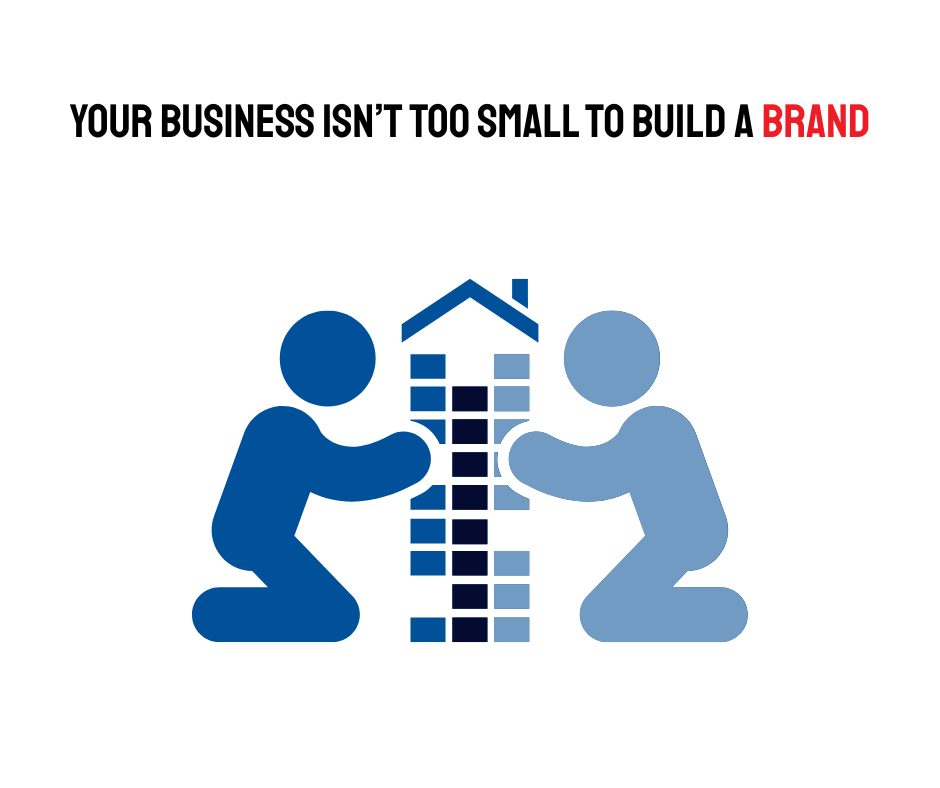July 7, 2025
Branding isn’t about size. It’s about clarity, consistency, and purpose. Small businesses with strong brands grow faster and retain more loyal customers. A brand is the promise you keep, not just the logo you use. Start with your story and values. Then build visual and verbal consistency. Every customer interaction should reinforce what makes you different. 636 Words ~ 3.5 min. read When most people think “brand,” they picture big names like Nike, Apple, or Starbucks. But in truth, some of the strongest brands belong to small businesses. Like the neighborhood bakery with a line out the door every Saturday. Or the local contractor everyone recommends without hesitation. What sets them apart isn’t budget. It’s branding done right. Branding isn’t just for big companies. It’s how any business, of any size, communicates who they are and why they matter. For small businesses, branding isn’t a luxury. It’s your edge. It helps you cut through noise, attract better-fit customers, and grow with confidence. Yet too often, small business owners treat branding as something they’ll invest in later. That’s a missed opportunity. A strong brand isn’t about fancy design or a clever tagline. It’s about clarity and consistency. It’s the promise you make and keep every time a customer interacts with your business. When done well, branding builds trust, emotional connection, and long-term loyalty. That’s true whether you’re running a restaurant, a retail shop, or a B2B service company. So where should a small business start? Not with a costly rebrand or an elaborate style guide. Begin with your story. Why did you start this business? What do you believe in? What do you do better than anyone else? Those answers are the foundation of your brand identity. Next, translate that identity into a voice and look that feel authentic to you. Choose a tone that fits your values. Whether that’s professional, casual, inspiring, or direct. Then use it across every customer touchpoint. One local accounting firm embraced a tone of friendly expertise in everything from its emails to signage and saw referrals rise 30 percent in a year. Your visuals matter too. You don’t need a world-class designer. Start with a few key colors, a clean font, and a logo that aligns with your message. What matters more than polish is consistency. Make sure your website, signage, social media, and printed materials all feel like they’re coming from the same voice and visual identity. And most importantly, bring your brand to life in how you deliver your service. Your customer experience should reflect your values in action. If your brand is about reliability, you need fast response times and follow-through. If it’s about community, you should be engaging locally and making people feel seen. Small businesses that get branding right build something bigger than marketing. They build reputation. They become memorable, trusted, and easier to recommend. A strong brand turns customers into advocates and consistency into growth. The Bottom Line: Branding isn’t about budget or business size. It’s about being clear on your purpose, consistent in your message, and authentic in how you show up. Take ten minutes today to write down what you stand for. That’s the first step to building a brand that lasts. Further Reading: Unleashing Your Brand's Personality in the Age of AI --- The Leavenworth-Lansing Area Chamber of Commerce is a private non-profit organization that aims to support the growth and development of local businesses and our regional economy. We strive to create content that not only educates but also fosters a sense of connection and collaboration among our readers. Join us as we explore topics such as economic development, networking opportunities, upcoming events, and success stories from our vibrant community. Our resources provide insights, advice, and news that are relevant to business owners, entrepreneurs, and community members alike. The Chamber has been granted license to publish this content provided by Chamber Today, a service of ChamberThink Strategies LLC.















